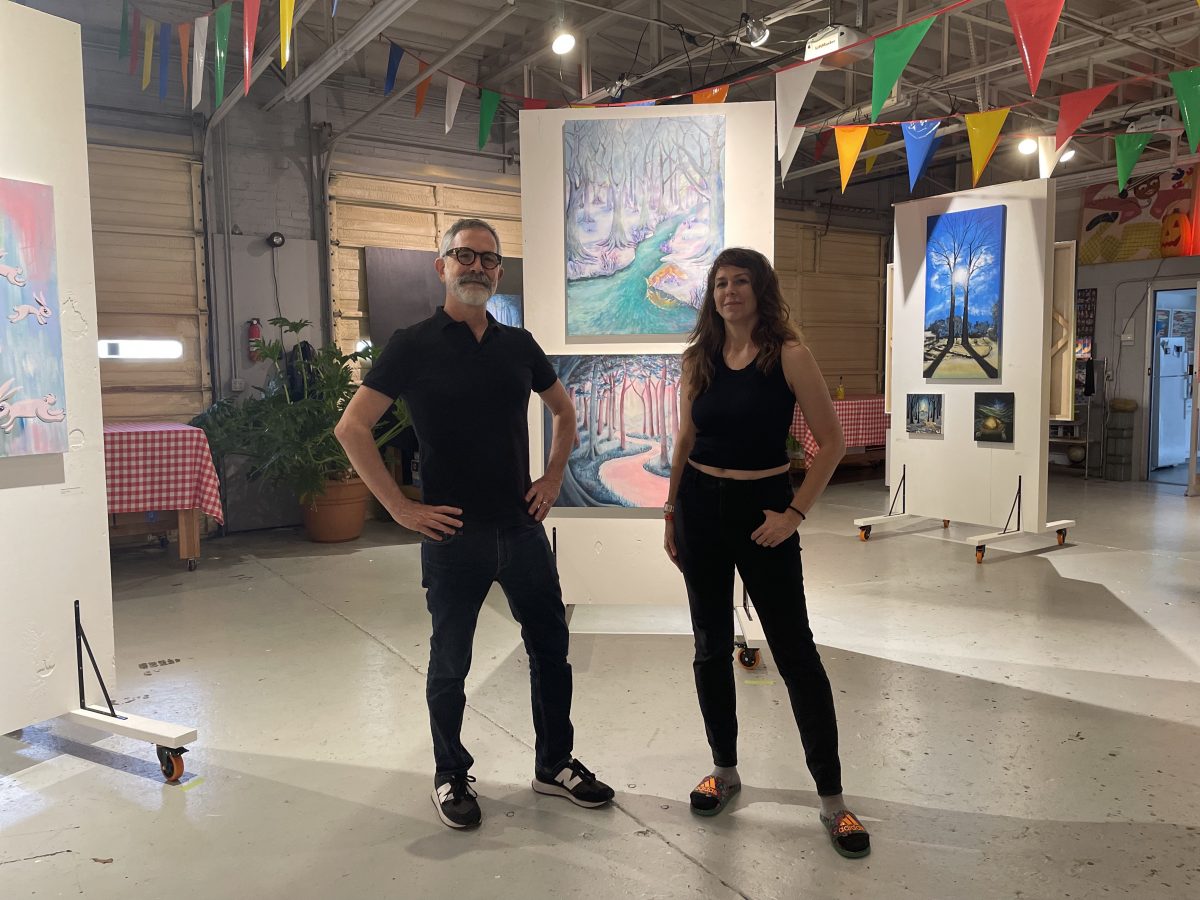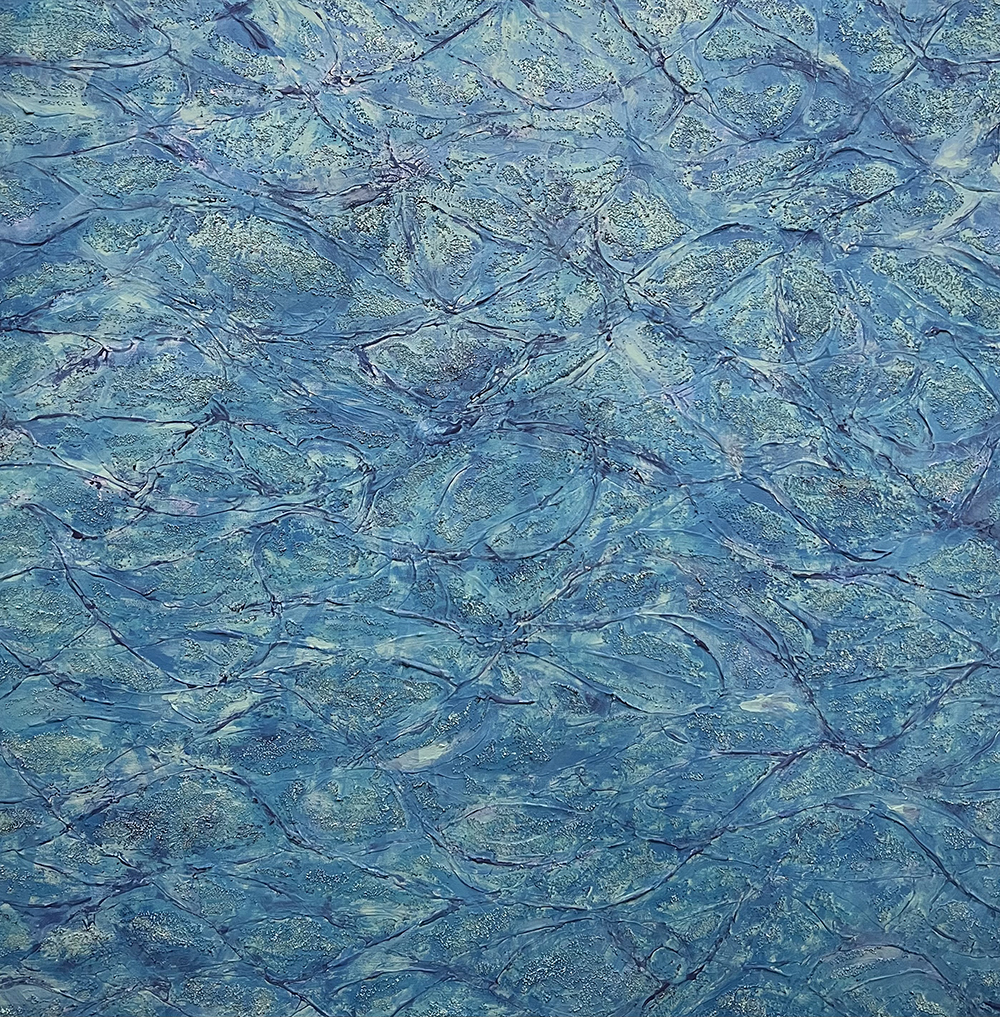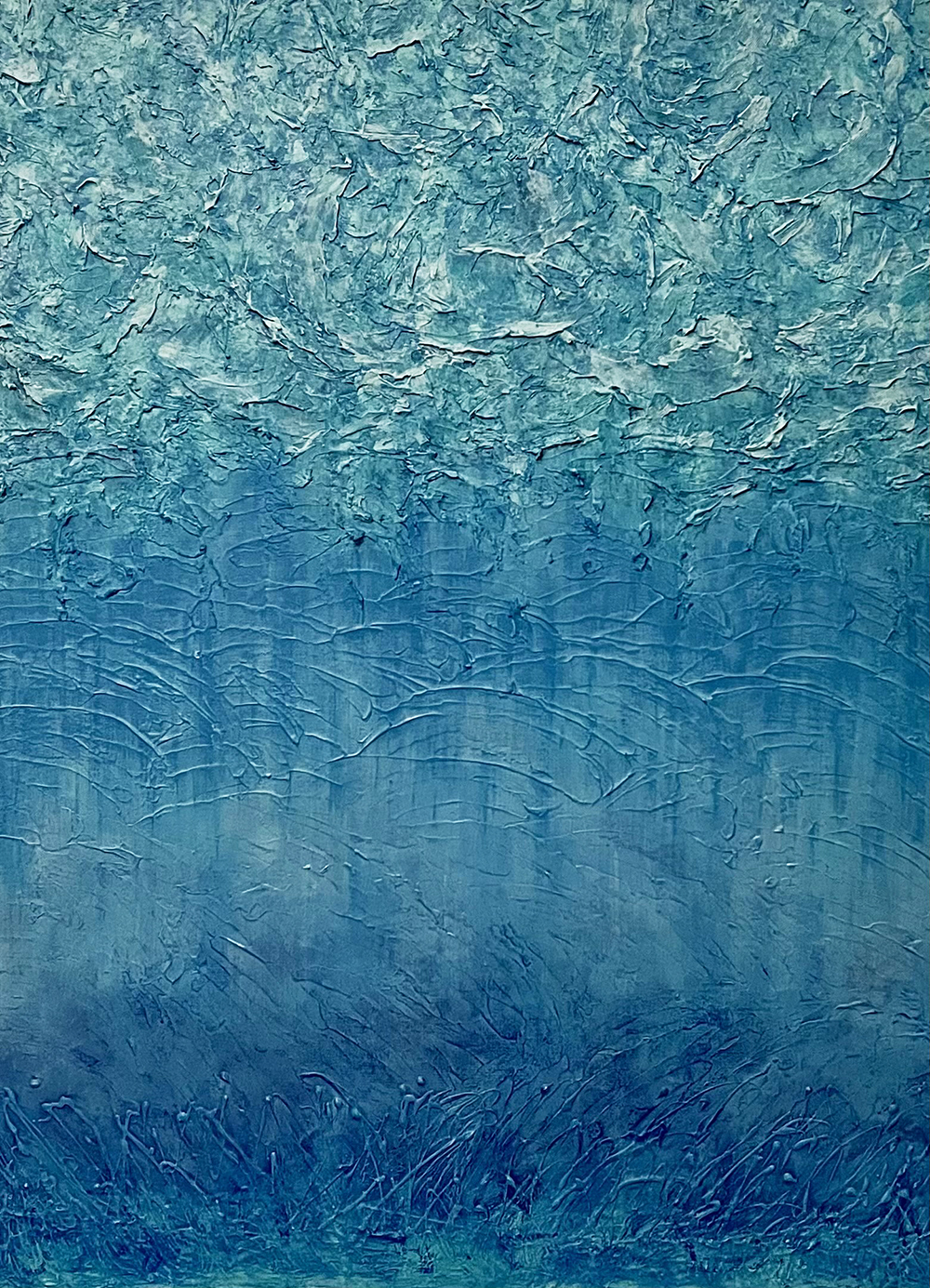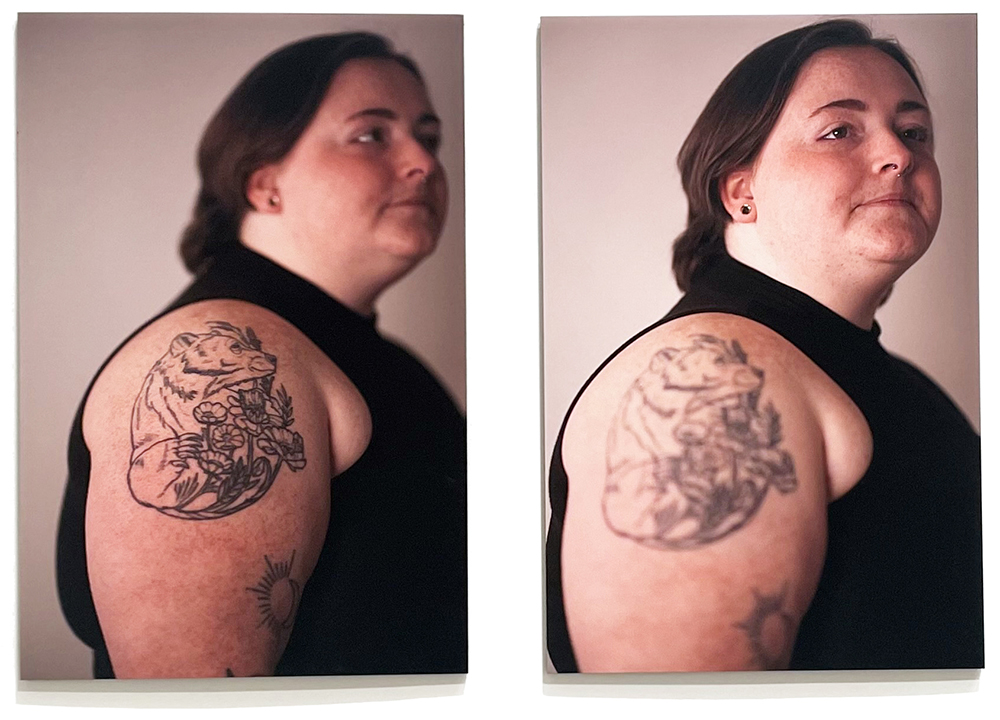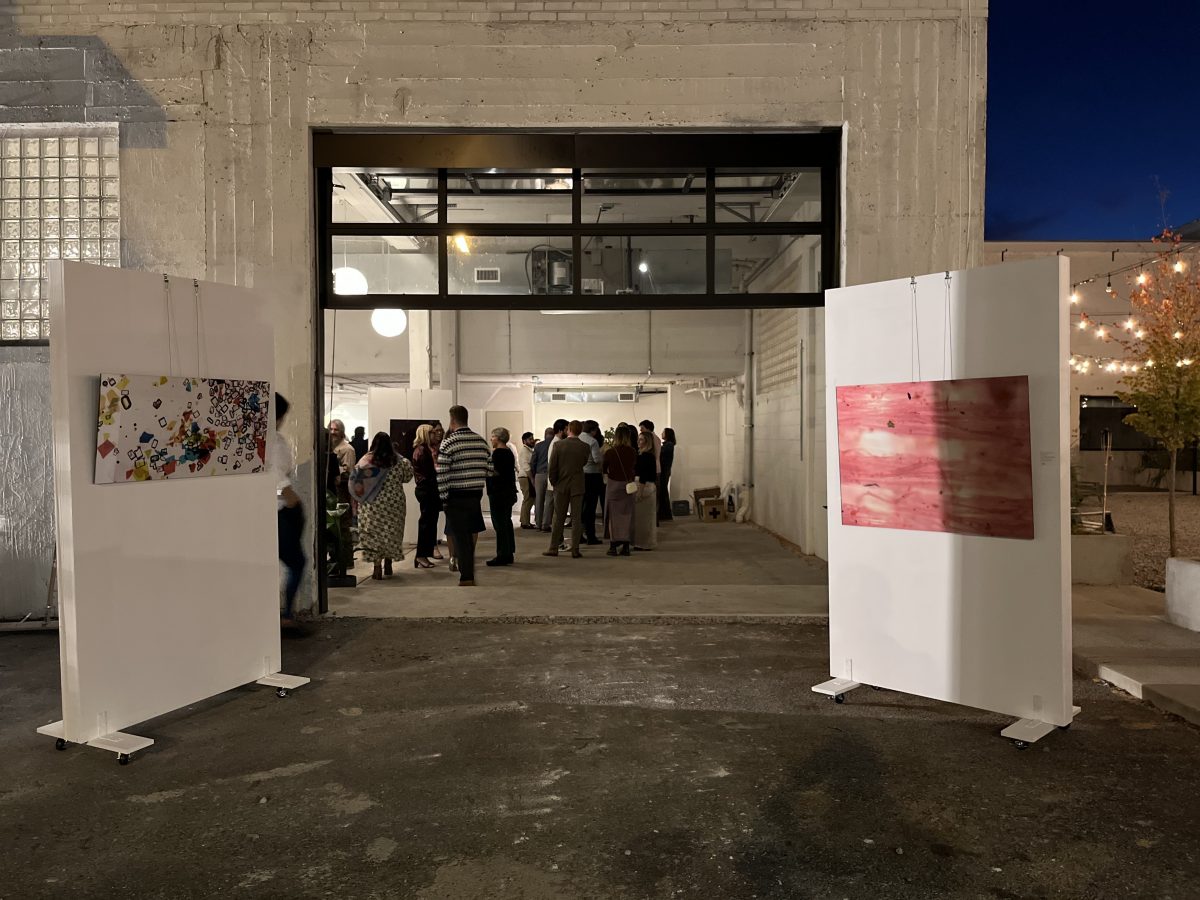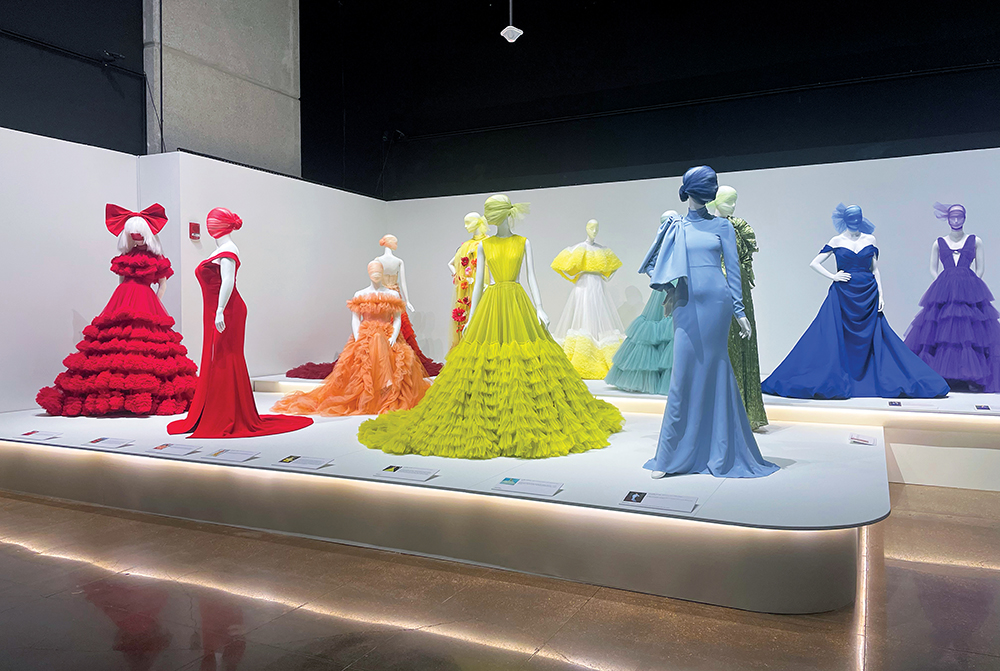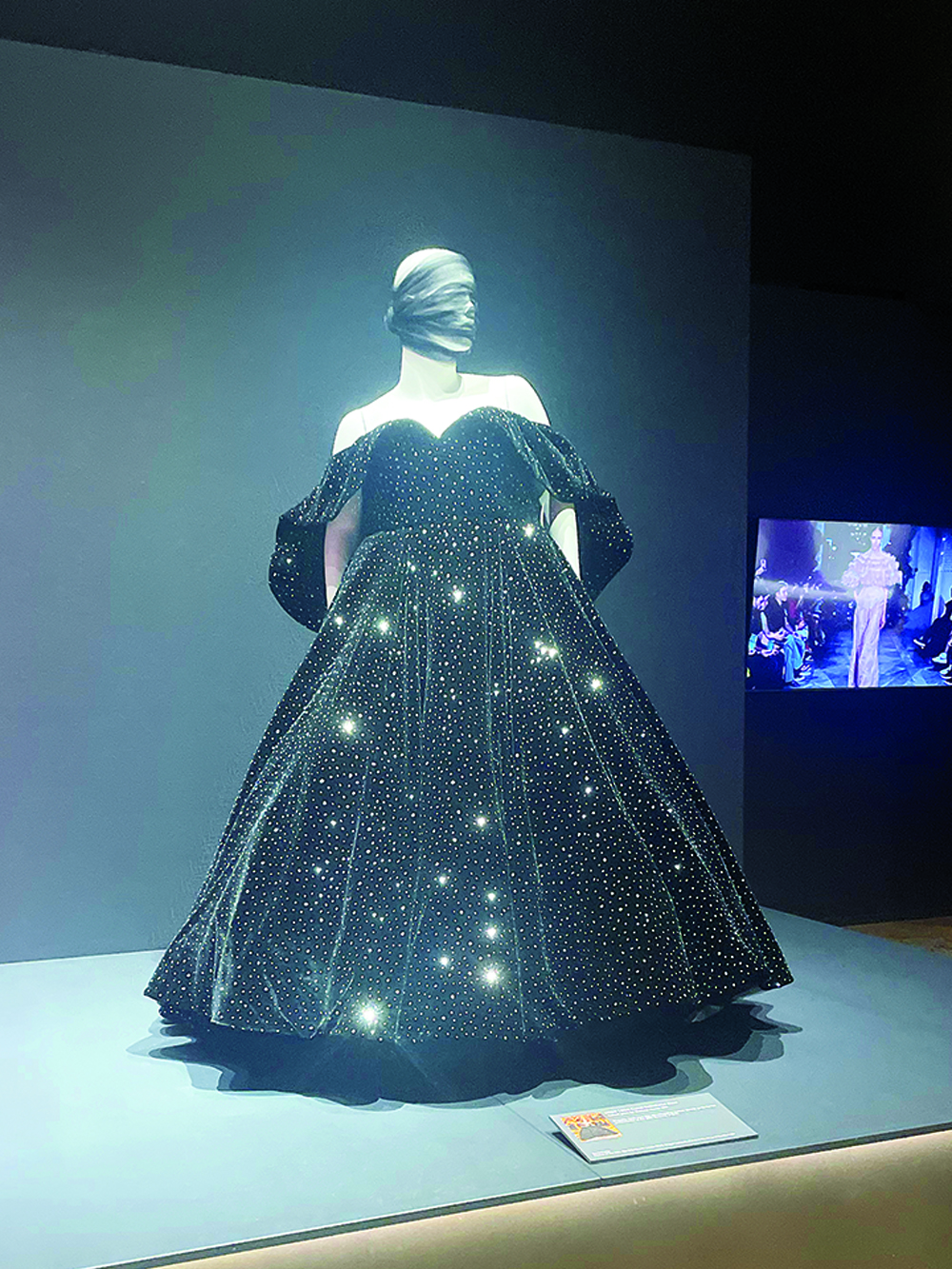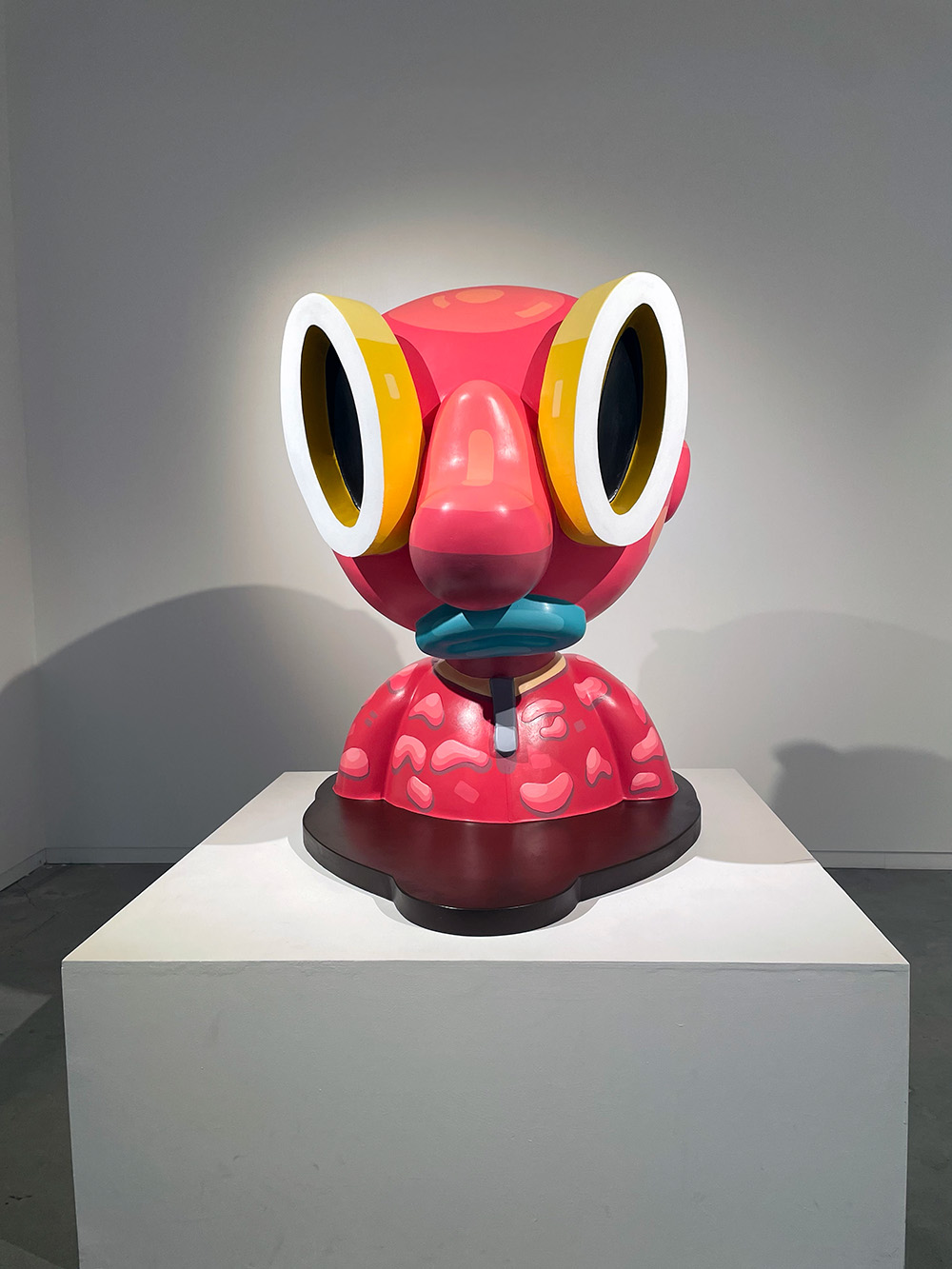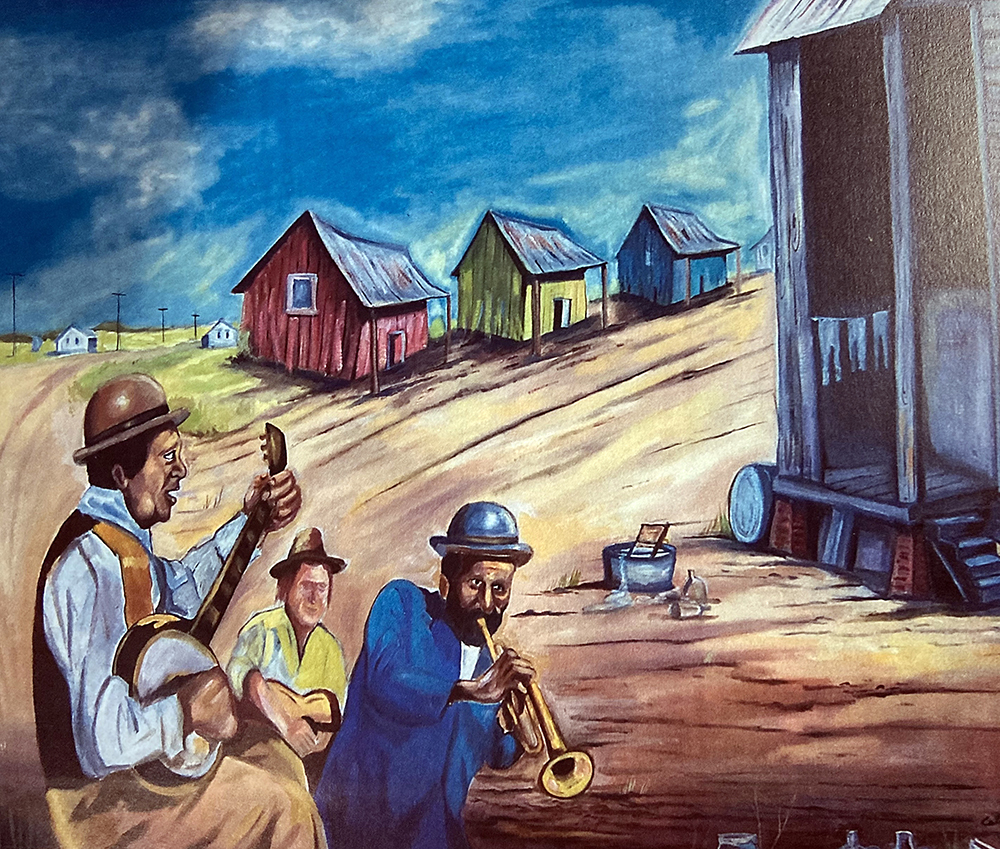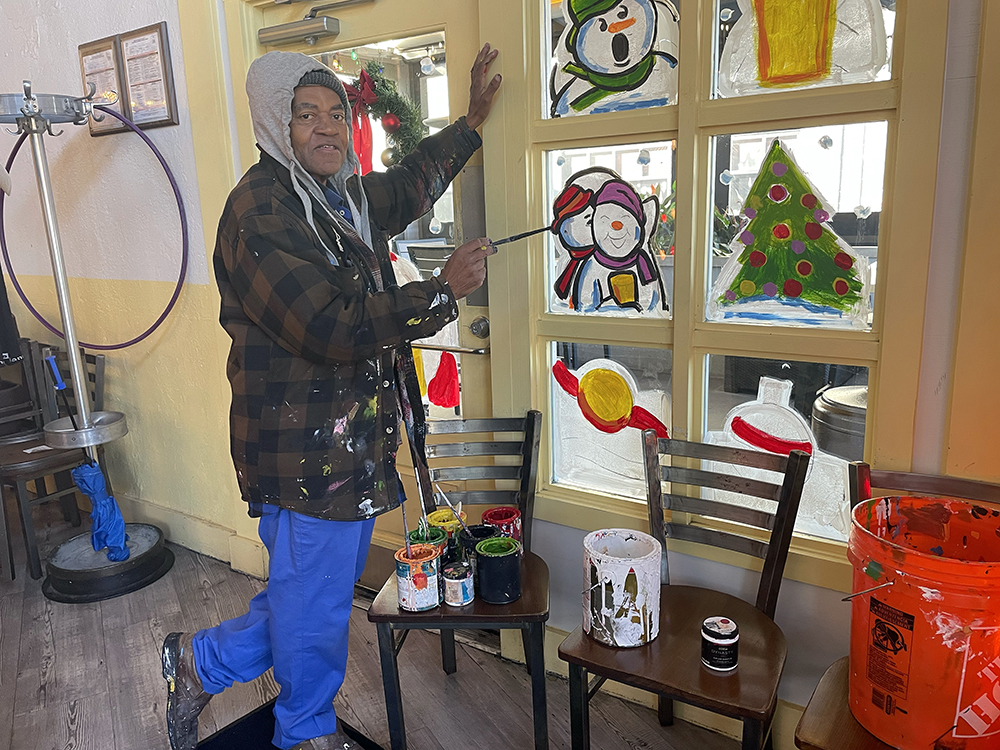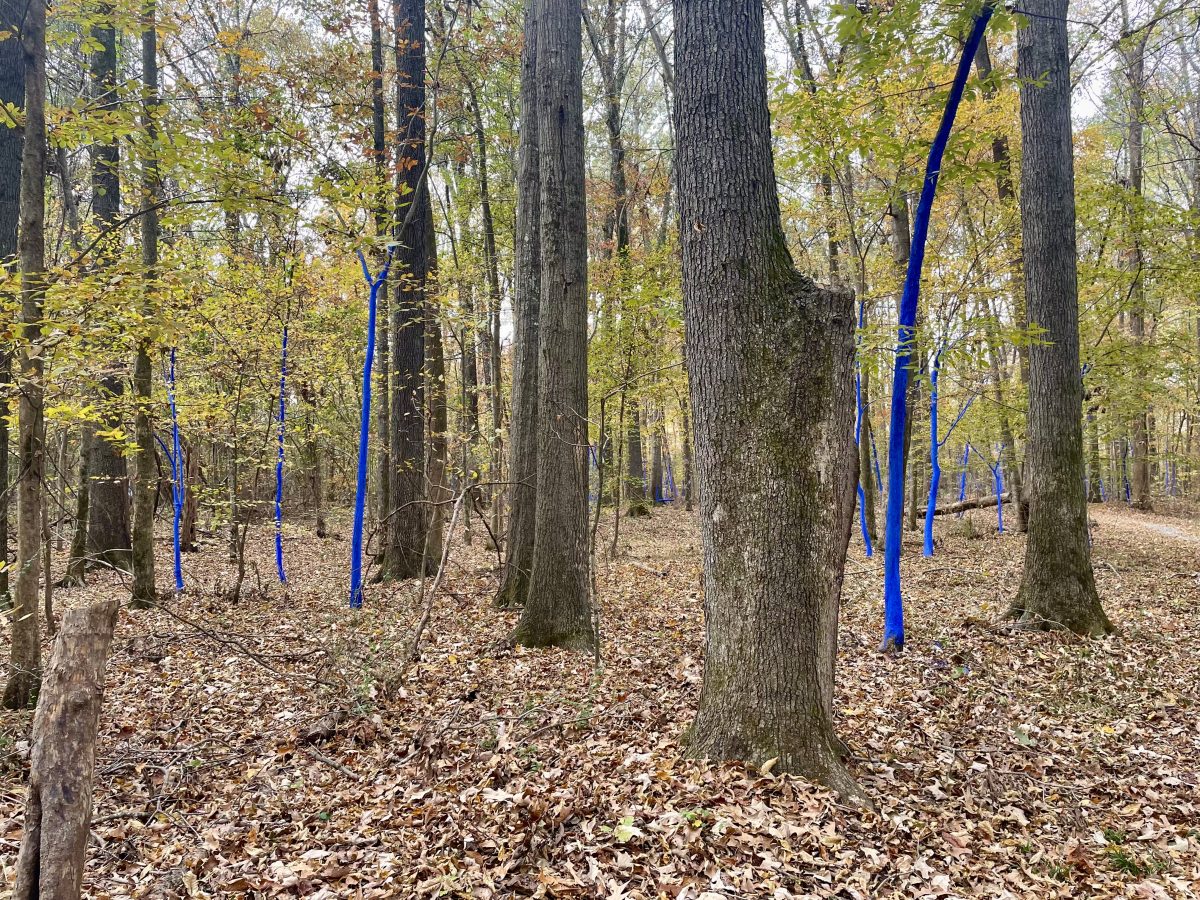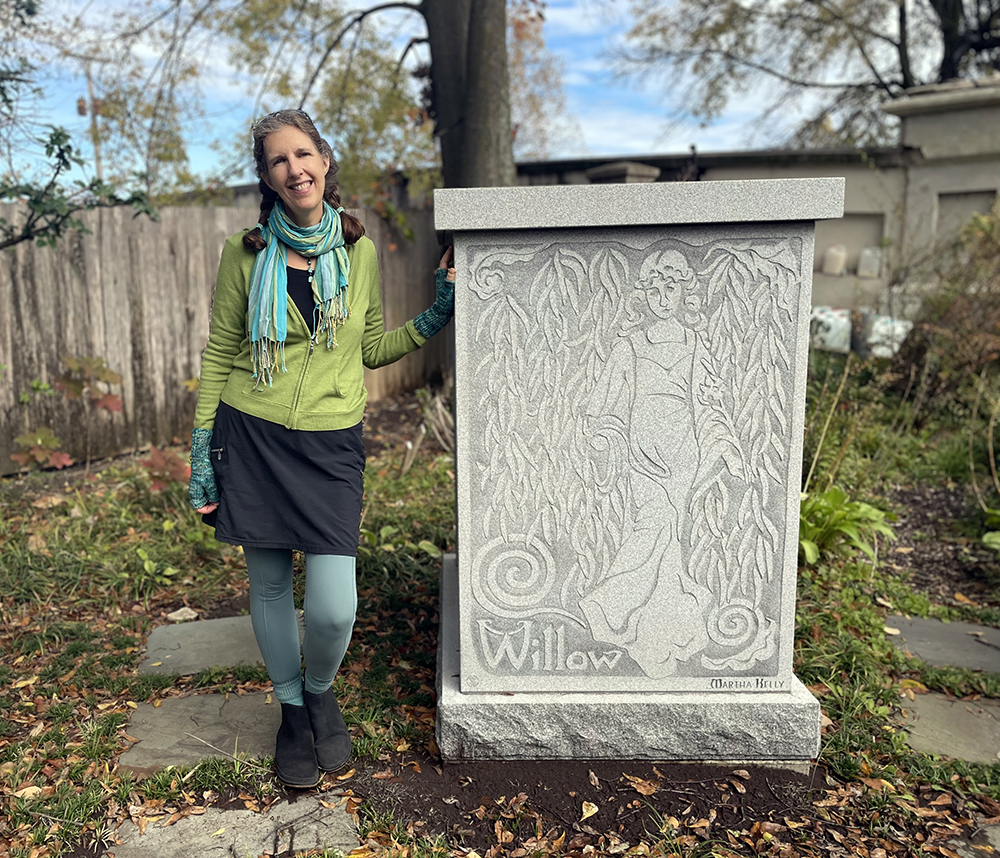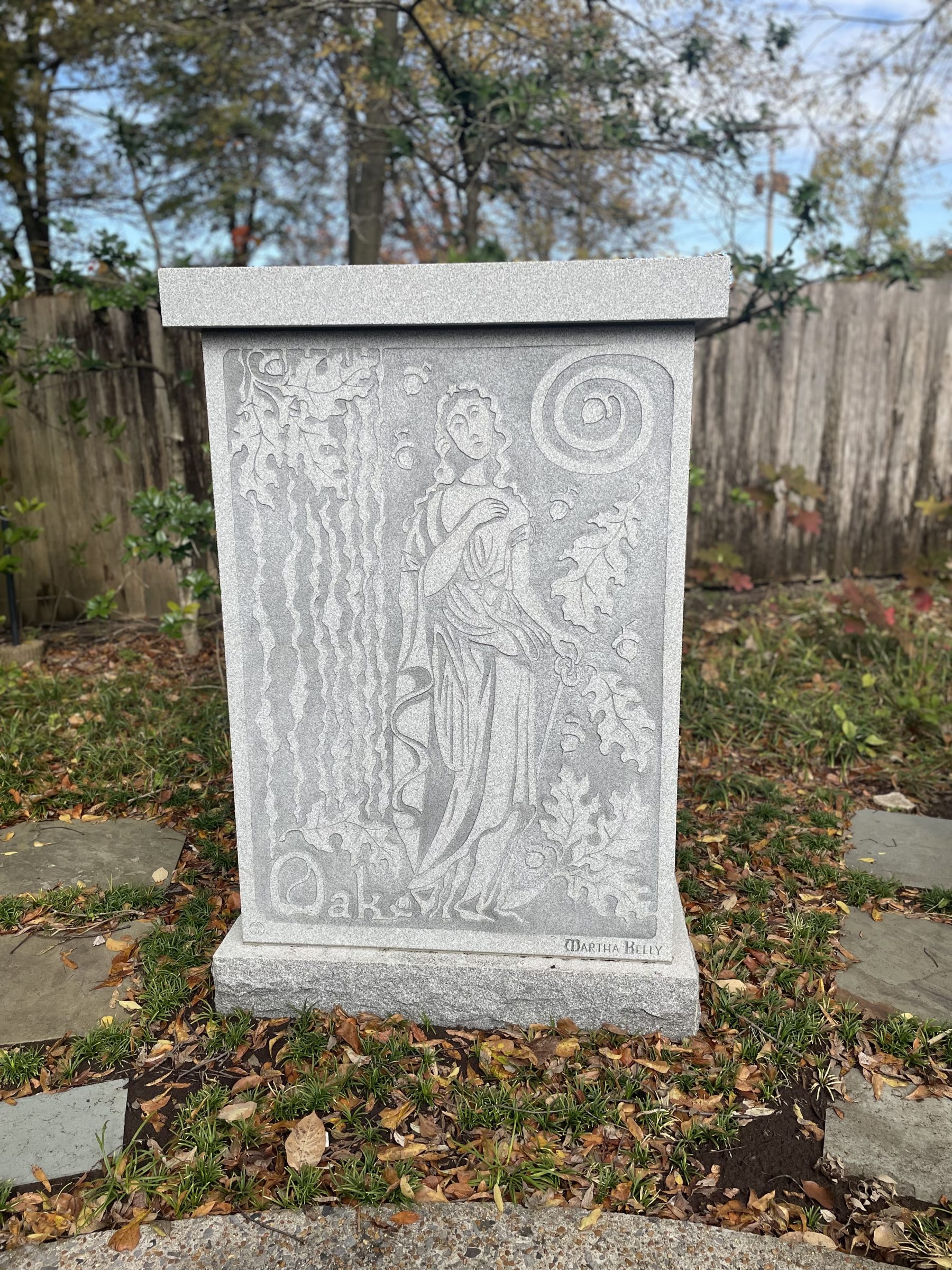Alicja Trout’s explored the rock-and-roll scene. She’s taken the risks that come with that, toured, worked the merch tables, designed her album covers and band T-shirts — and she’s not done with music, that much needs to be said — but Trout has found a new passion, or rather reignited an old one: visual art. And, this Sunday, she’ll introduce her new artform to Memphis in her solo art show, “Understory,” at Brantley Ellzey’s Summer Studio.
Ellzey, who helped curate the show, says he didn’t know Trout painted until this year, and he expects most Memphians also know Trout solely for her music. Even so, when he first saw her paintings, he knew he wanted to show them in his studio. “I had a show for Lee Chase for his photography, and then I had a show for Moth Moth Moth,” Ellzey says. “So I’m kind of focusing on artists that are multidisciplinary but maybe people don’t necessarily know that they are visual artists, and they might be familiar to people in Memphis in other ways.”
For Trout, who’s been known as Alicja-Pop around Memphis for the better part of her life, art has taken a backseat to her music after earning her master’s in fine arts from the Memphis College of Art. “One of the main reasons I chose to do music is I do enjoy being alone a lot, and I found that I would just not ever socialize [if I were a visual artist, working alone in a studio],” she says. “I was like, ‘No, I don’t want to live my twenties and my thirties alone,’ so I chose music as a thing to do with people.”
As the years went by, she would make things here and there — dresses for her daughters, a small painting for a room. “Maintenance art,” her friend called it. “I love art,” Trout says. “And every time I go to a museum, I just love it. And I just got inspired by that again, and music started to weigh on me as, ‘Oh, it’s work. I have to record and sit in my dark space in front of a screen or computer and play over and over again to get it right.’ I just felt like I needed a break.”
That break would come in 2020 with the onset of the pandemic. She started small with simple graphic linework on a small canvas, but eventually she graduated to large landscapes. She experimented with styles and forwent realism.

“Because I came from doing music for so long and then went back into painting, I think a lot of it, I had fun doing it because I was experimenting again,” Trout says. “When I left art school and I went into music, I would do more like posters and flyers and record covers and things that were done with a purpose with words on them and stuff. It was kind of like graphic design, rock-and-roll posters.”
But this return to painting allowed her to “get more simple.” “I also took on this nature and interest in trees,” she adds, “because I think it’s part of getting older as a person, especially when you come from rock music and rock-and-roll and you’re used to the aesthetic of nighttime clubs and all that stuff. But then I have children and I just got a lot more into taking peace outside and animals and nature and creatures in my yard and growing things. So it’s just like a natural progression of time.”
Music, it turns out, had allowed her to work out “a lot of issues in my brain and anger and frustration, just angst and all that stuff. And I think I’ve processed that at this point.”
So, her paintings lean into the fantastical, portraying a sense of peace in storybook landscapes. “As with a diorama in a natural history museum, the viewer is transported into a scene both natural and artificial,” reads Trout’s artist statement. “Sheltering tree limbs comfort and calm like a protective parent.”

Often in Trout’s landscapes viewers can find a lone creature, at ease in its environment varied in color, often not found in nature. A winding path or river, or sometimes a single light source, will bring the eye to the a focal point on the canvas, offering a familiar image though it represents the unknown.
“For some reason, it’s cozy and comfortable [in the fantastical],” Trout says. “ I am kind of a loner, and that stuff, like Lord of the Rings, The Hobbit, and fairy tales, has always been a cozy space for me, and maybe having daughters, I went through that again with them and watched a lot of Disney and I read at a lot of beautiful illustration books with them. It was such a cozy space.”
But even in this coziness, Trout hopes to challenge the viewer to reflect on the environment and their place in it. “This body of work displays my love and fascination for the natural world and my fear that we will lose it to inharmonious human development,” she writes in her statement.
In all, though, the works are a personal triumph for the artist. “I was super happy to come back to painting,” she says. “It’s normally in my house and shut in closets and to see it all up, I just want people to come and be part of the experience.”
Join Alicja Trout for the opening reception of “Understory” at Brantley Ellzey’s Summer Studio (3086 Summer Avenue) on Sunday, May 19th, 2 to 6 p.m. The show will be on display through June 2nd.
